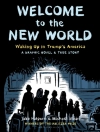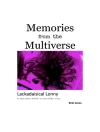Rabindranath Tagore was the most significant literary figure of Bengali literature. As a poet, novelist, musician, and playwright, Tagore reshaped Bengali literature and music in the late 19th and early 20th centuries. ‘The Home and the World’ is a novel from 1916 that illustrates the struggle Tagore had within himself, between Western cultural ideas and the revolution against those very ideas. The work was a great success worldwide and was among those selected in a list by ‘The Telegraph’ as one of the top 10 greatest Asian novels of all time. A highly noteworthy achievement, though not extraordinary for a writer who, in 1915, was awarded the Nobel Prize in Literature.
Sobre el autor
Rabindranath Tagore (Bengali: Calcutta, May 7, 1861 – August 7, 1941), nicknamed Gurudev, was a Bengali polymath. As a poet, novelist, musician, and playwright, he reshaped Bengali literature and music in the late 19th and early 20th centuries. As the author of ‘Gitanjali, ‘ translated as ‘Song Offerings’ in English, his ‘deeply sensitive, fresh, and beautiful verses’ made him the first non-European to win the Nobel Prize in Literature in 1913. Tagore's poetic songs were seen as spiritual and mercurial; however, his ‘elegant prose and magical poetry’ remain largely unknown outside Bengal.
Tagore was perhaps the most important literary figure in Bengali literature. He was a prominent representative of Hindu culture, whose influence and international popularity may only be compared to that of Gandhi, whom Tagore called 'Mahatma' due to his deep admiration for him.
A Pirali Brahmin from Calcutta, Tagore began writing poems at the age of eight. By the age of sixteen, he published his first substantial poetry under the pseudonym Bhanushingho (‘Sun Lion’) and wrote his first short stories and dramas in 1877. As a humanist, universalist, internationalist, and fervent anti-nationalist, he denounced British rule and advocated for India's independence from Britain. As an exponent of the Bengal Renaissance, he advanced a vast canon that included paintings, sketches, and doodles, hundreds of texts, and around two thousand songs; his legacy also remains in the institution he founded, Visva-Bharati University.
Tagore modernized Bengali art by eschewing rigid classical forms. His novels, stories, songs, dramatic dances, and essays addressed both political and personal themes. His most famous works include ‘Gitanjali’ (Song Offerings), ‘Gora’ (Fair-Faced), and ‘Ghare-Baire’ (The Home and the World). His verses, stories, and novels were acclaimed for their lyricism, colloquialism, naturalism, and contemplation.












